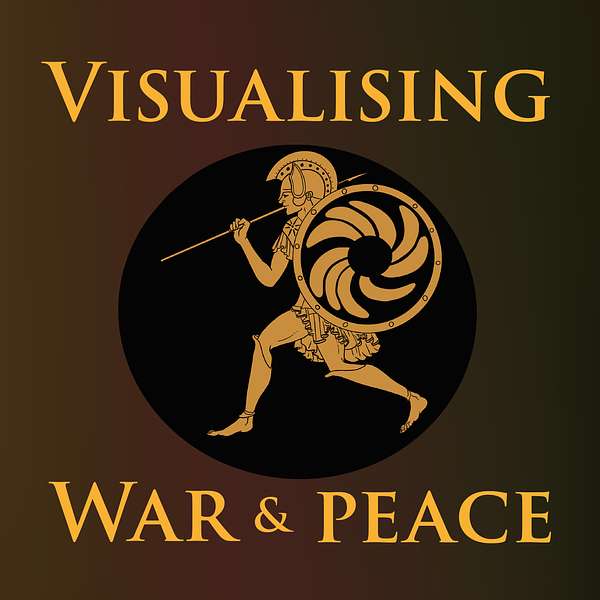
Visualising War and Peace
How do war stories work? And what do they do to us? Join University of St Andrews historian Alice König and colleagues as they explore how war and peace get presented in art, text, film and music. With the help of expert guests, they unpick conflict stories from all sorts of different periods and places. And they ask how the tales we tell and the pictures we paint of peace and war influence us as individuals and shape the societies we live in.
Visualising War and Peace
Gallipoli to the Somme: musical responses to WW1 with Kate Kennedy and Anthony Ritchie
In this episode, Alice talks to acclaimed composer Dr Anthony Ritchie about his oratorio 'Gallipoli to the Somme', which was commissioned for the Dunedin Symphony Orchestra and City Choir Dunedin as part of the centenary commemorations of the First World War. Also joining us is Dr Kate Kennedy, a musician, librettist and expert on the poetry and songs of WW1. Both have lots to say about how music can deepen our understanding of war and its impacts.
Kate has recently published a biography of the poet and composer Ivor Gurney, and that gets us chatting about the mix of high-brow poetry and more bawdy trench song which have together shaped our habits of visualising the First World War. A soldier during the war, Gurney suffered a series of breakdowns and spent his last fifteen years confined to a mental asylum. The songs he composed reflect real tensions in the ways in which he and his contemporaries regarded the war, for example by undercutting celebratory verses with disturbing harmonies that evoke violence and trauma.
Anthony's oratorio similarly plays with ironic contrasts between words and music, making use of silence as well as well-known musical quotations to weave a narrative about the First World War that captures many perspectives. Based on Alexander Aitken's book 'Gallipoli to the Somme', the oratorio includes a Maori war song, German Lieder, contemporary folk songs, a battle plan set to music, and the words attributed to Mustafa Kemal Atatürk, the first President of the Republic of Turkey, inscribed on the Ari Burnu Memorial, Gallipoli.
The composition process got Anthony thinking about the purpose of performing war history; the most effective ways to represent war in music and words; what it means to commemorate war and the dangers of distorting reality to make war more manageable for audiences; and how commemorations can critique as well as celebrate past conflicts. Among other questions, Alice asked:
- how differently is WW1 remembered in New Zealand compared with elsewhere?
- what forms of commemoration or storytelling dominate our habits of visualising WW1?
- what impact did centenary commemorations have on how we view this well-known conflict?
- what different musical responses to WW1 have there been over the last century?
- what challenges and opportunities do composers wrestle with when representing war in music?
- what musical styles did Anthony adopt in his oratorio, Gallipoli to the Somme, and why?
- how might this oratorio change or develop the ways in which we look back on WW1 today?
We hope you enjoy the episode! You can listen to the whole of Anthony's oratorio 'Gallipoli to the Somme' here; it is one of the most moving and thought-provoking representations of the First World War in existence. Kate's latest book, 'Dweller in Shadows: A Life of Ivor Gurney', is also a tour de force, and will make you want to dive deeper into Gurney's works; you can purchase it here.
For a version of our podcast with close captions, please use this link. For more information about individuals and their projects, please have a look on the University of St Andrews Visualising War website.
Music composed by Jonathan Young
Sound mixing by Zofia Guertin